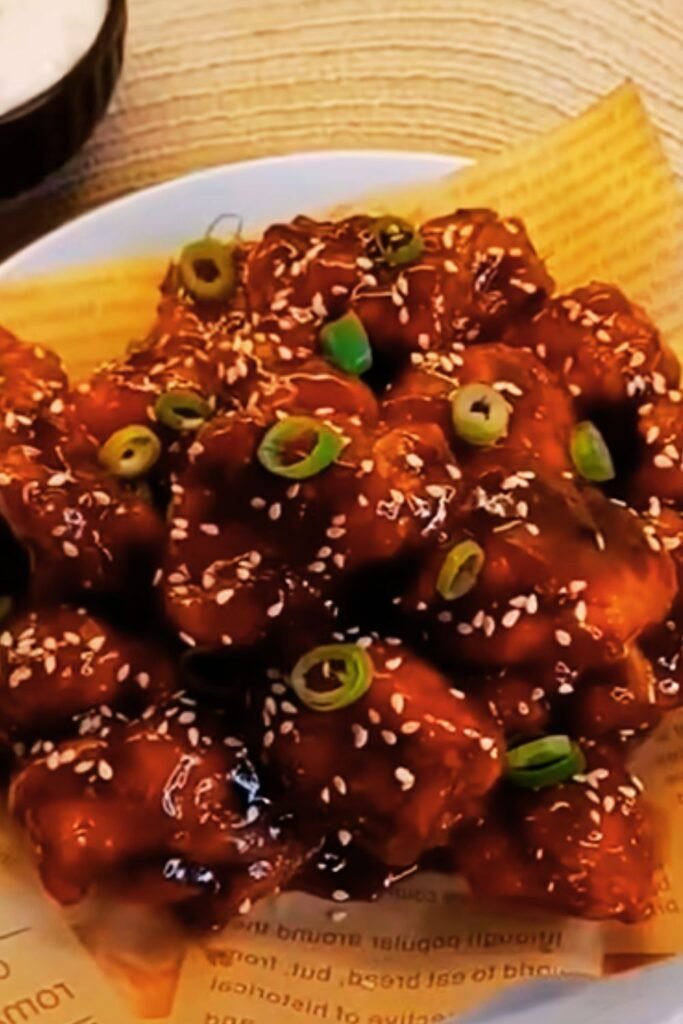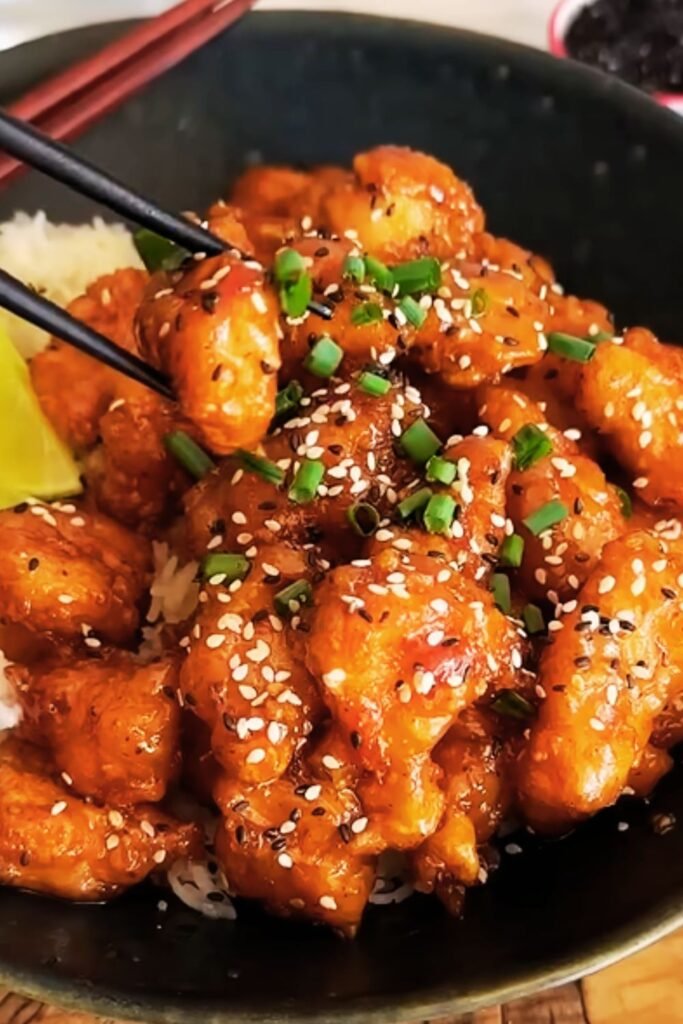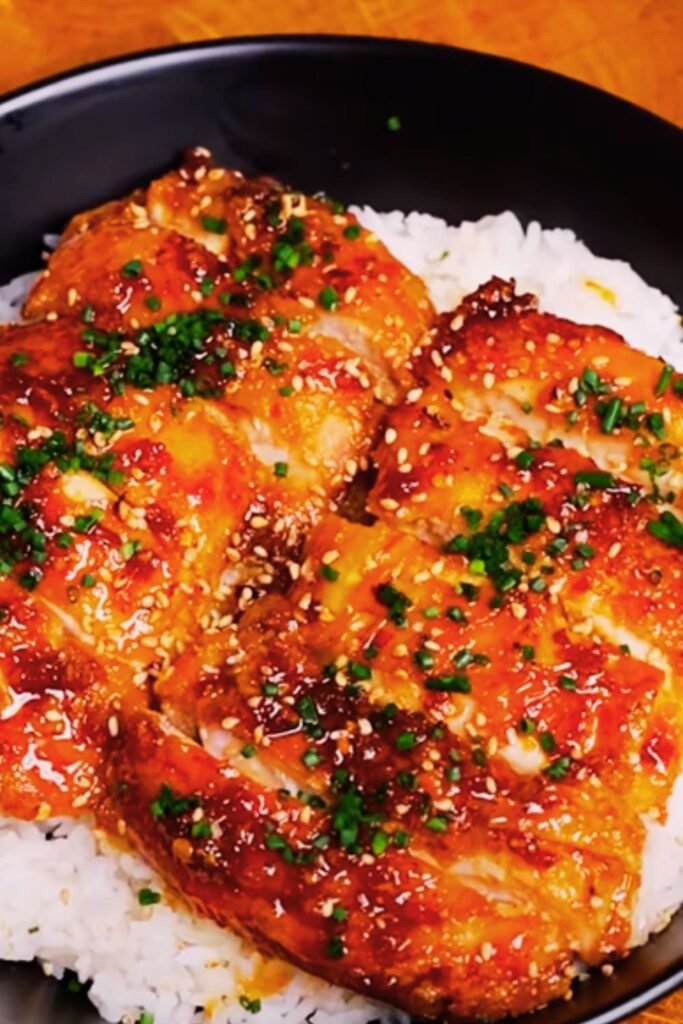There’s something magical about the combination of sweet honey and savory garlic that transforms ordinary chicken into an extraordinary meal. I’ve been perfecting this honey garlic chicken recipe for years, and I can confidently say it’s become my go-to dish when I need something delicious, quick, and satisfying. Whether you’re cooking for your family on a busy weeknight or preparing an impressive meal for guests, this recipe delivers every single time.
The beauty of honey garlic chicken lies in its simplicity and versatility. With just a handful of ingredients and about 30 minutes of your time, you can create a restaurant-quality dish that will have everyone asking for seconds. I love how the honey caramelizes beautifully while cooking, creating a glossy, golden coating that’s both visually stunning and incredibly flavorful.
What Makes This Recipe Special
After trying countless variations of honey garlic chicken, I’ve discovered that the secret lies in balancing the sweetness of honey with the pungency of fresh garlic, while ensuring the chicken remains tender and juicy. My version incorporates a few techniques that elevate this dish from good to absolutely irresistible.
The marinade time is crucial – I’ve found that even 15 minutes makes a significant difference in flavor penetration. However, if you have the luxury of time, letting the chicken marinate for up to 4 hours will result in even more incredible taste. The key is not to over-marinate, as the honey can start to break down the proteins too much.
Essential Ingredients Breakdown
Main Protein:
- Chicken thighs (bone-in, skin-on): 2 pounds – provides the juiciest, most flavorful base
- Alternative: Chicken breasts (boneless, skinless): 1.5 pounds – for a leaner option
Honey Garlic Sauce Foundation:
- Raw honey: 1/3 cup – choose a good quality, preferably local honey
- Fresh garlic cloves: 6-8 large cloves, minced
- Soy sauce: 1/4 cup – adds umami depth
- Rice vinegar: 2 tablespoons – balances the sweetness
- Sesame oil: 1 tablespoon – provides nutty richness
Flavor Enhancers:
- Fresh ginger: 1 tablespoon, grated
- Red pepper flakes: 1/2 teaspoon (adjust to taste)
- Green onions: 3-4 stalks, chopped
- Sesame seeds: 2 tablespoons for garnish
Cooking Essentials:
- Olive oil: 2 tablespoons
- Salt and black pepper: to taste
- Cornstarch: 1 tablespoon (for thickening if needed)

Detailed Cooking Instructions
Step 1: Preparing the Chicken
I always start by patting the chicken completely dry with paper towels. This step is crucial because moisture on the surface prevents proper browning and caramelization. If you’re using chicken thighs, I recommend leaving the skin on – it becomes beautifully crispy and adds incredible flavor to the dish.
Season the chicken generously with salt and pepper on both sides. I like to do this about 10 minutes before cooking to allow the seasoning to penetrate the meat. This simple step makes a noticeable difference in the final flavor.
Step 2: Creating the Perfect Honey Garlic Sauce
In a medium bowl, I whisk together the honey, minced garlic, soy sauce, rice vinegar, sesame oil, and grated ginger. The consistency should be smooth and well-combined. I often make this sauce ahead of time and store it in the refrigerator for up to a week – it’s incredibly versatile and works with other proteins too.
The quality of honey makes a significant difference here. I prefer using raw, unprocessed honey as it has more complex flavors and doesn’t contain added sugars or preservatives. Local honey varieties often have unique flavor profiles that can add an interesting dimension to the dish.
Step 3: The Cooking Process
Heat olive oil in a large skillet or cast-iron pan over medium-high heat. I prefer cast iron because it retains heat well and creates beautiful caramelization. Once the oil shimmers, carefully place the chicken pieces skin-side down if using thighs.
Cook without moving the chicken for 5-7 minutes. I know it’s tempting to peek, but resistance is key here. The chicken will release naturally when it’s properly seared. You’ll hear the sizzling sound change, and the edges will start to look golden.
Flip the chicken and cook for another 4-5 minutes. At this point, the internal temperature should reach about 140°F for thighs or 130°F for breasts – we’re not looking for fully cooked yet, as the sauce cooking will finish the process.
Step 4: The Magic Happens
Pour the honey garlic sauce over the chicken, and this is where the magic truly begins. The sauce will start bubbling immediately, and the aroma that fills your kitchen is absolutely divine. Reduce the heat to medium-low and let the chicken simmer in the sauce.
For chicken thighs, cook for an additional 15-20 minutes, turning once halfway through. For chicken breasts, 10-12 minutes is usually sufficient. The sauce will gradually thicken and become glossy, coating the chicken beautifully.

Nutritional Information and Health Benefits
| Nutrient | Per Serving (1 piece with sauce) | Daily Value % |
|---|---|---|
| Calories | 285 | 14% |
| Protein | 28g | 56% |
| Carbohydrates | 18g | 6% |
| Fat | 12g | 18% |
| Saturated Fat | 3g | 15% |
| Cholesterol | 95mg | 32% |
| Sodium | 680mg | 30% |
| Potassium | 320mg | 9% |
| Vitamin C | 8mg | 13% |
| Iron | 1.2mg | 7% |
Honey provides natural antioxidants and has antimicrobial properties, while garlic offers significant cardiovascular benefits and immune system support. The combination creates not just a delicious meal but also one with genuine health benefits.
Cooking Method Variations
Oven-Baked Version
Preheat your oven to 425°F. After searing the chicken as described above, transfer the skillet to the oven (if oven-safe) or move everything to a baking dish. Bake for 20-25 minutes until the internal temperature reaches 165°F.
Slow Cooker Adaptation
Place chicken in the slow cooker, pour the sauce over it, and cook on low for 4-6 hours or high for 2-3 hours. For better texture, I recommend searing the chicken first, then transferring to the slow cooker.
Air Fryer Method
Cook chicken at 380°F for 12-15 minutes, flipping halfway through. Brush with sauce during the last 5 minutes of cooking. This method creates an incredibly crispy exterior while keeping the inside juicy.
Perfect Side Dish Pairings
| Side Dish Category | Recommended Options | Cooking Time | Flavor Profile |
|---|---|---|---|
| Rice Varieties | Jasmine rice, Brown rice, Coconut rice | 15-20 minutes | Neutral, absorbs sauce well |
| Vegetables | Steamed broccoli, Roasted Brussels sprouts, Stir-fried bok choy | 10-15 minutes | Fresh, balances richness |
| Starches | Mashed sweet potatoes, Quinoa, Wild rice pilaf | 20-30 minutes | Hearty, complementary |
| Salads | Asian slaw, Cucumber salad, Mixed greens | 5-10 minutes | Light, refreshing contrast |
I particularly love serving this with jasmine rice because it perfectly absorbs the extra honey garlic sauce. The combination is absolutely heavenly, and I often find myself making extra rice just to soak up every last drop of that incredible sauce.
Storage and Reheating Tips
Leftover honey garlic chicken stores beautifully in the refrigerator for up to 4 days. I transfer it to airtight containers along with any remaining sauce. The flavors actually continue to develop overnight, making the leftovers sometimes even better than the original meal.
For reheating, I prefer using the oven at 350°F for about 10-15 minutes, which helps maintain the texture better than microwaving. If you’re in a hurry, the microwave works fine – just cover the chicken and use 50% power to prevent overcooking.
The dish also freezes well for up to 3 months. I portion it into individual servings before freezing, which makes weeknight dinners incredibly convenient. Thaw overnight in the refrigerator and reheat as mentioned above.

Troubleshooting Common Issues
Sauce Too Thin: If your sauce isn’t thickening properly, mix 1 tablespoon of cornstarch with 2 tablespoons of cold water to create a slurry. Stir this into the simmering sauce and cook for an additional 2-3 minutes.
Chicken Drying Out: This usually happens when the heat is too high or the cooking time is too long. Remember that chicken continues cooking even after removing it from heat, so aim for an internal temperature of 160°F, which will reach 165°F during resting.
Sauce Burning: If the honey starts to burn (you’ll notice a bitter smell), immediately reduce the heat and add a splash of chicken broth or water to dilute the sauce slightly.
Garlic Overpowering: Fresh garlic can vary significantly in intensity. Start with fewer cloves and add more to taste. You can also use roasted garlic for a milder, sweeter flavor.
Serving Suggestions and Presentation
I love garnishing this dish with freshly chopped green onions and a sprinkle of sesame seeds. The color contrast is beautiful, and these additions provide a fresh crunch that complements the tender chicken perfectly.
For family dinners, I often serve it family-style on a large platter, allowing everyone to help themselves. For more formal occasions, I plate individual portions with a small mound of rice, the chicken alongside, and a careful drizzle of the glossy sauce over everything.
The dish pairs wonderfully with a variety of non-alcoholic beverages. I particularly enjoy it with iced green tea, sparkling water with lime, or even a refreshing lemonade that complements the sweet and savory flavors.
Seasonal Adaptations
Spring Version: Add fresh snap peas and baby carrots during the last 5 minutes of cooking for a colorful, seasonal twist.
Summer Variation: Incorporate fresh pineapple chunks for a tropical flavor that pairs beautifully with the honey garlic combination.
Fall Adaptation: Include diced butternut squash or sweet potatoes, extending the cooking time to ensure they’re tender.
Winter Enhancement: Add warming spices like star anise or cinnamon stick to the sauce for a cozy, aromatic variation.
Professional Tips for Success
After making this recipe countless times, I’ve learned several professional techniques that consistently produce restaurant-quality results. First, always let your chicken come to room temperature before cooking – this ensures even cooking throughout.
Second, don’t overcrowd the pan. If you’re doubling the recipe, use two pans or cook in batches. Overcrowding leads to steaming rather than proper searing, which affects both texture and flavor development.
Third, taste and adjust the sauce before serving. Honey sweetness can vary, and soy sauce saltiness differs between brands. I always keep extra honey and soy sauce on hand for final adjustments.
Frequently Asked Questions
Q: Can I use chicken breasts instead of thighs? Absolutely! Chicken breasts work wonderfully, though they require slightly less cooking time. I recommend pounding them to an even thickness for uniform cooking, and be extra careful not to overcook them as they can dry out more quickly than thighs.
Q: How can I make this recipe gluten-free? Simply substitute the soy sauce with tamari or coconut aminos. Both provide similar umami depth while keeping the dish completely gluten-free. The rest of the ingredients are naturally gluten-free.
Q: Can I prepare this dish ahead of time? Yes! You can marinate the chicken up to 4 hours in advance, and the sauce can be prepared up to a week ahead. For meal prep, I often cook the entire dish on Sunday and portion it for the week.
Q: What’s the best way to prevent the honey from burning? Keep the heat at medium-low once you add the sauce, and stir occasionally. If you notice the sauce darkening too quickly, add a tablespoon of water or chicken broth to thin it slightly.
Q: Can I use dried garlic instead of fresh? While fresh garlic provides the best flavor, you can substitute with 2 teaspoons of garlic powder. Add it at the same time as the other sauce ingredients, but be aware that the flavor will be less intense and complex.
Q: How do I know when the chicken is properly cooked? The internal temperature should reach 165°F when measured with a meat thermometer. The juices should run clear, and the meat should no longer be pink. If you don’t have a thermometer, cut into the thickest part – the meat should be white throughout.
Q: Can I double or triple this recipe for a crowd? Certainly! Just be sure to use a larger pan or cook in batches to avoid overcrowding. You might need to extend the cooking time slightly when making larger quantities.
Q: What other proteins work well with this sauce? This honey garlic sauce is incredibly versatile. I’ve used it successfully with salmon, pork chops, shrimp, and even tofu. Adjust cooking times accordingly for different proteins.
This honey garlic chicken recipe has become a cornerstone of my cooking repertoire, and I’m confident it will become one of yours too. The combination of simplicity, flavor, and versatility makes it perfect for any occasion, from casual family dinners to impressive entertaining. The key is to not overthink it – let the quality ingredients shine through, and you’ll create a memorable meal that everyone will love.